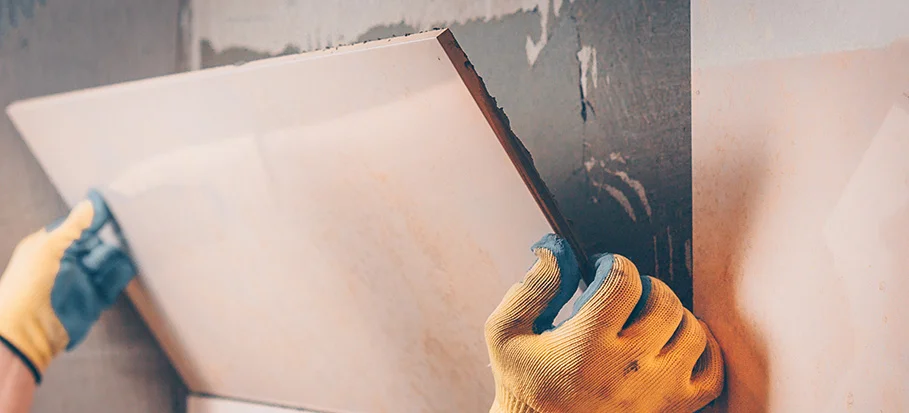When it comes to mixing tile adhesive, remember that ‘measure twice, cut once.’ Properly blending adhesive is crucial for a successful tiling project. Before you jump into the process, make sure you have all the necessary tools at hand. But what’s the right ratio of adhesive to water? And how do you achieve the perfect consistency for a strong bond? Stay tuned to discover the essential steps and expert tips for mastering the art of mixing tile adhesive. Also Read Manufacturers of Tile Adhesive, Wall Putty & Epoxy Grout
Importance of Proper Mixing
- To ensure a strong and durable bond, proper mixing of tile adhesive is crucial for a successful tile installation. The importance of consistency in mixing can’t be overstated. By achieving the correct consistency, you ensure that the adhesive will adhere properly to the tiles and the substrate, creating a bond that will stand the test of time.
- Proper tools are essential for achieving the right mix. A mixing paddle attached to a power drill is ideal for ensuring that the adhesive is thoroughly blended. This tool allows for efficient mixing, ensuring that all components are evenly distributed throughout the adhesive.
- Consistency is key when mixing tile adhesive. Aim for a smooth, lump-free mixture that’s easy to spread but still has enough body to support the weight of the tiles. Take your time when mixing to avoid any dry clumps or uneven patches in the adhesive. By prioritizing proper mixing techniques and using the right tools, you set the foundation for a successful tile installation.

Gather Essential Tools
- For gathering essential tools to mix tile adhesive effectively, ensure you have a mixing paddle attached to a power drill. This tool is essential for achieving a smooth and consistent adhesive mixture.Additionally, you’ll need a large bucket or mixing tub to combine the adhesive components properly.
- Select a bucket size that accommodates the amount of adhesive you intend to mix to prevent spillage and facilitate thorough mixing.A margin trowel or a similar tool is crucial for scooping and spreading the adhesive onto the substrate. Make sure the trowel is clean and free of any debris that could contaminate the adhesive mixture.
- When selecting tools, prioritize ones that are specifically designed for mixing tile adhesive to ensure optimal results. Safety precautions are paramount when working with power tools like a drill. Always wear appropriate personal protective equipment such as goggles and gloves to protect yourself from any potential hazards. Familiarize yourself with the operation of the tools and follow the manufacturer’s instructions for safe and effective use.
Measure Adhesive and Water
- When measuring adhesive and water for mixing tile adhesive, ensure accuracy by using a digital scale for precise quantities. Start by referring to the manufacturer’s instructions for the correct mixing ratios. These ratios are crucial for achieving the right consistency in your tile adhesive. Once you have the mixing ratios, place a clean bucket on the digital scale and tare it to zero. Measure out the appropriate amount of dry adhesive powder according to the specified ratio.
- Next, slowly add the required amount of water to the adhesive powder in the bucket. It’s essential to pour the water gradually while stirring continuously to prevent lumps and achieve a smooth mixture. Keep an eye on the consistency as you mix; it should be thick but workable, similar to peanut butter.
- To ensure you’ve reached the correct consistency, perform a quick consistency check by pressing a trowel into the adhesive and pulling it back; the adhesive should form peaks that stand up slightly before slowly collapsing. Adjust by adding more powder or water if needed.
Mix Adhesive to Proper Consistency
- After achieving the correct mixing ratios of adhesive and water as per the manufacturer’s instructions, the next crucial step is ensuring you mix the adhesive to the proper consistency. To achieve the ideal consistency, use mixing techniques such as stirring the adhesive in a smooth, circular motion.
- This method helps prevent lumps and ensures a uniform mixture. Troubleshooting tip: If the adhesive appears too thick, gradually add small amounts of water while continuously mixing until you reach the desired consistency. Conversely, if the adhesive is too thin, sprinkle in more adhesive powder and mix thoroughly until it thickens.
- Common mistakes when mixing adhesive include adding too much water at once, leading to a runny consistency that won’t hold the tiles properly. The solution is to add water gradually, checking the consistency after each addition.
- Another mistake is mixing too quickly, which can trap air bubbles in the adhesive. To avoid this, mix slowly and deliberately, scraping the sides and bottom of the container to ensure all components are fully blended. By following these mixing techniques and troubleshooting suggestions, you’ll be on your way to achieving the perfect adhesive consistency for your tiling project.
Tips for Successful Adhesive Mixing
- To ensure successful adhesive mixing, focus on achieving a smooth, lump-free consistency by employing proper mixing techniques. Start by pouring the correct amount of water into a clean bucket, followed by adding the adhesive gradually while stirring continuously. This helps prevent clumps and ensures a uniform mixture. When mixing, use a paddle attachment on a drill for efficient blending and to avoid air bubbles. Pay attention to the adhesive’s instructions regarding water-to-adhesive ratio to achieve the ideal consistency.
- Troubleshooting common mistakes can save you time and resources. If the mixture is too thick, gradually add small amounts of water until reaching the desired texture. Conversely, if it’s too runny, sprinkle in more adhesive powder and mix thoroughly. Best practices include double-checking measurements, mixing smaller batches if needed, and working in manageable sections to prevent the adhesive from drying out before laying tiles. By following these mixing techniques and troubleshooting tips, you’ll be on your way to successful tile installations.
Conclusion
Properly mixing tile adhesive is crucial for a successful tiling project. By following the steps outlined in this article and using the right tools, you can ensure that your adhesive is mixed to the correct consistency. Remember to measure accurately and mix thoroughly to avoid any issues during installation. With practice and attention to detail, you’ll be able to confidently tackle any tiling project with ease.


